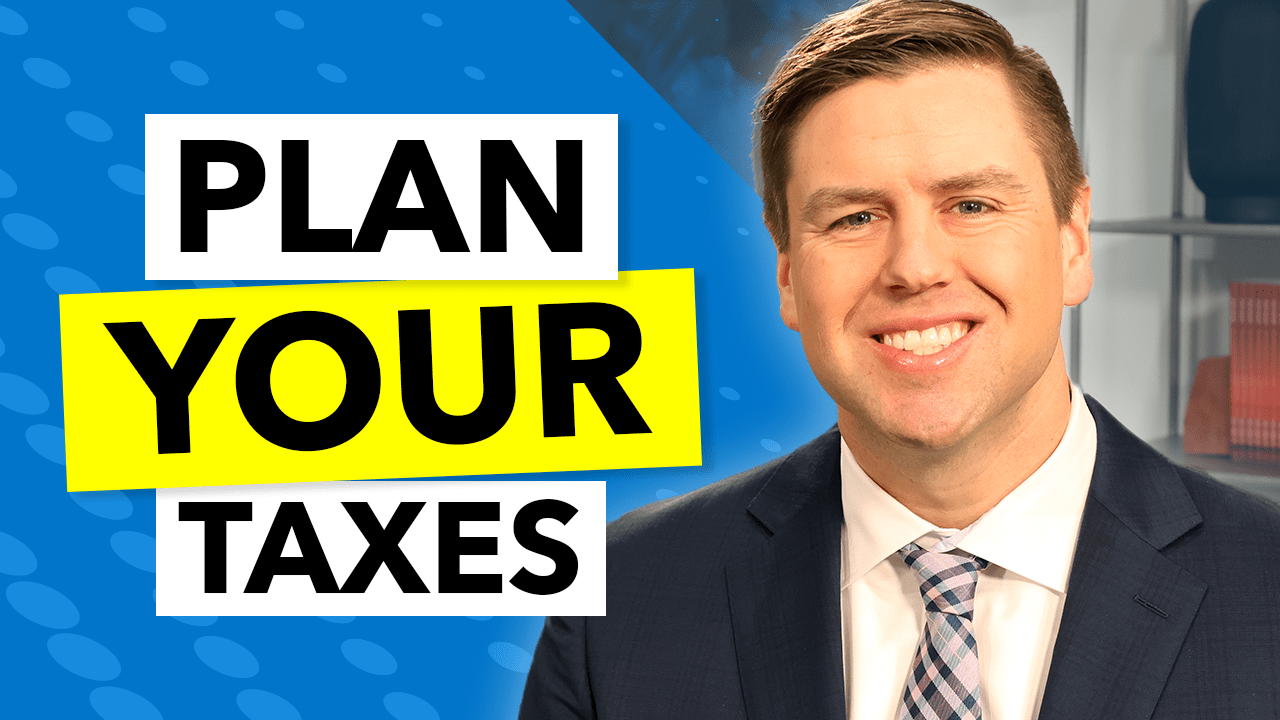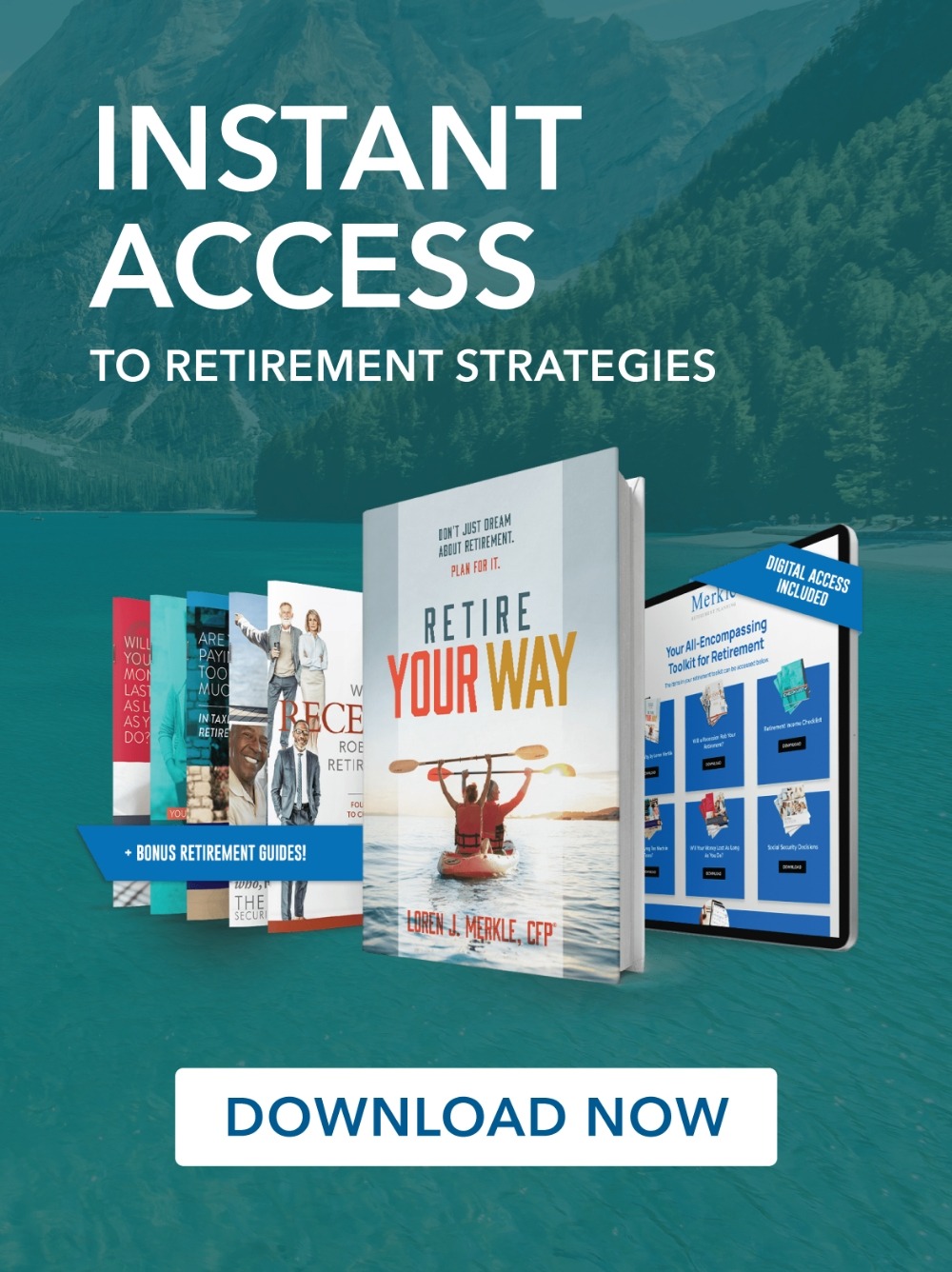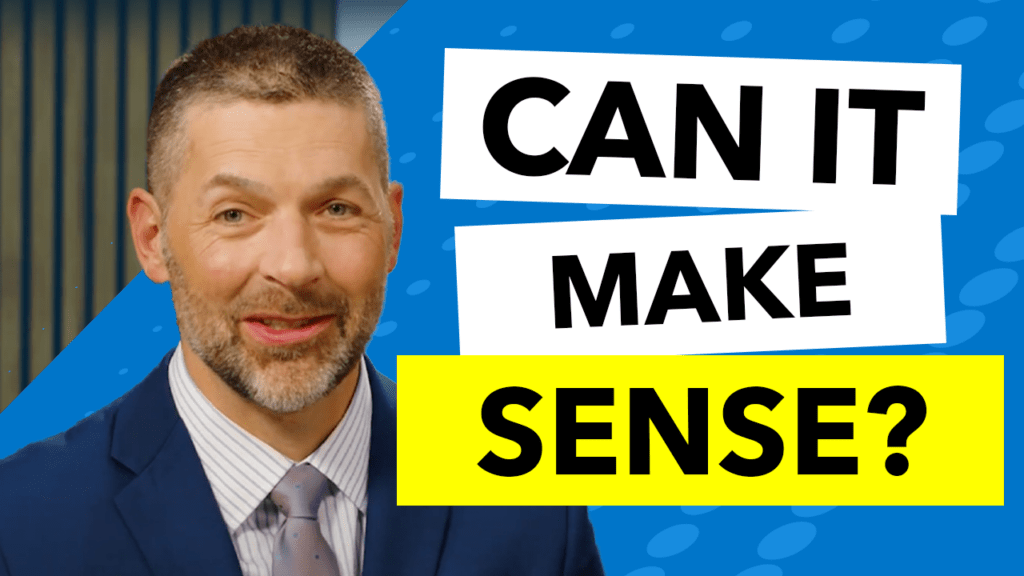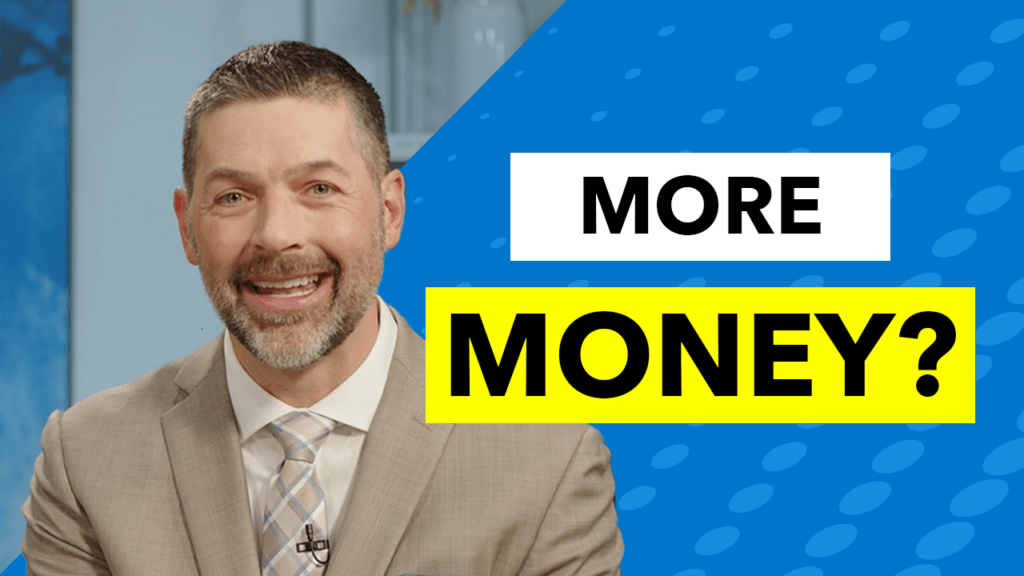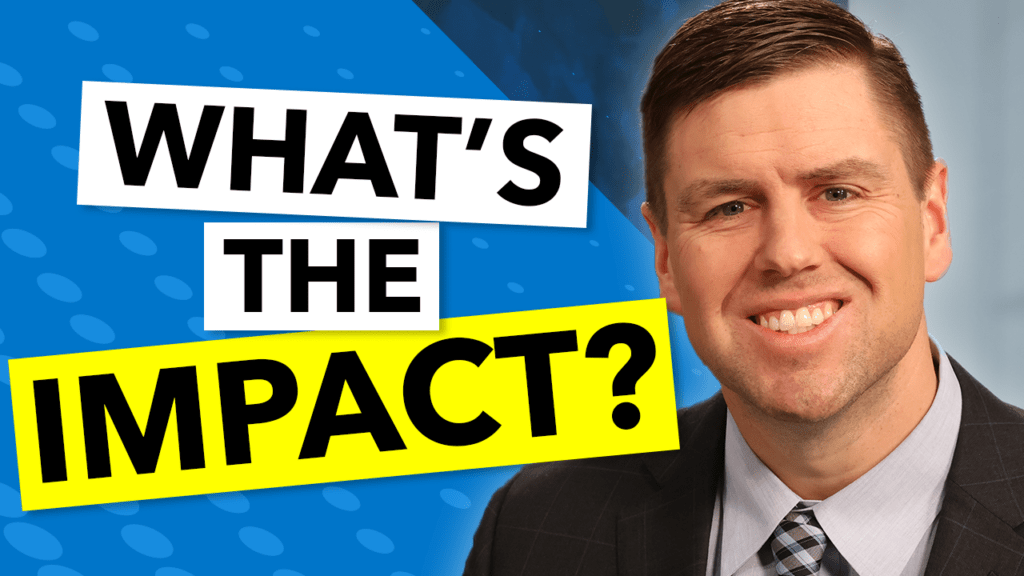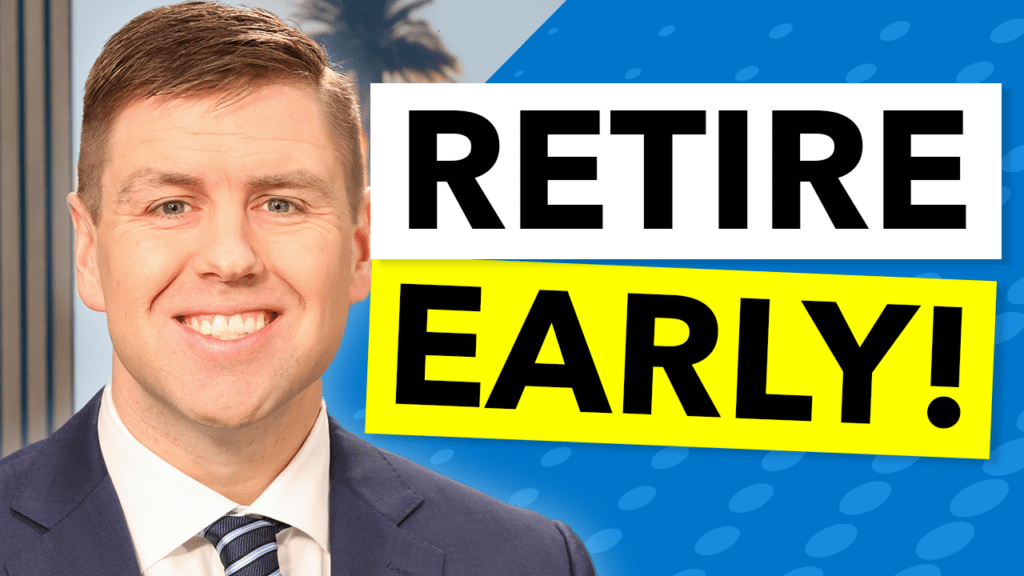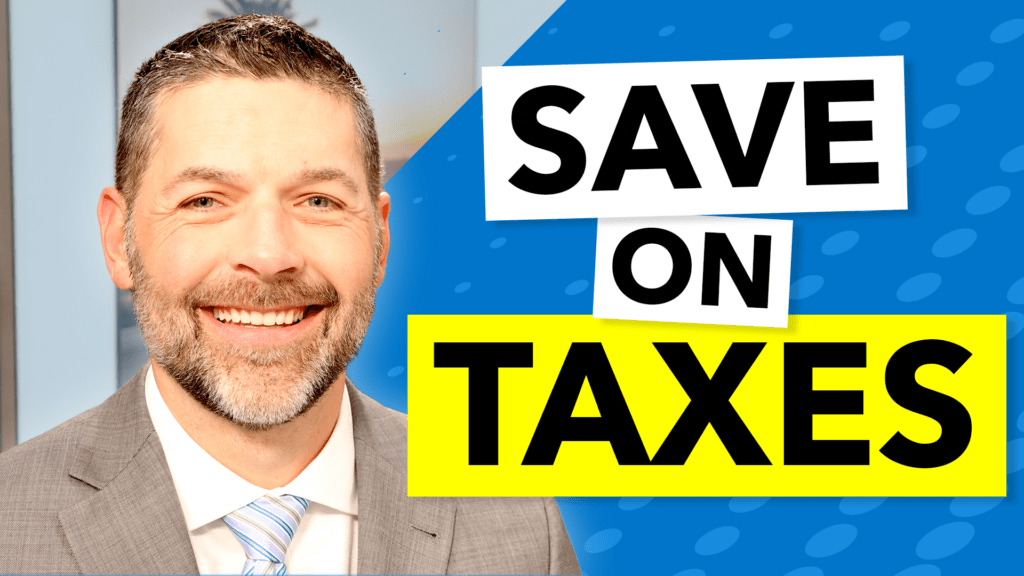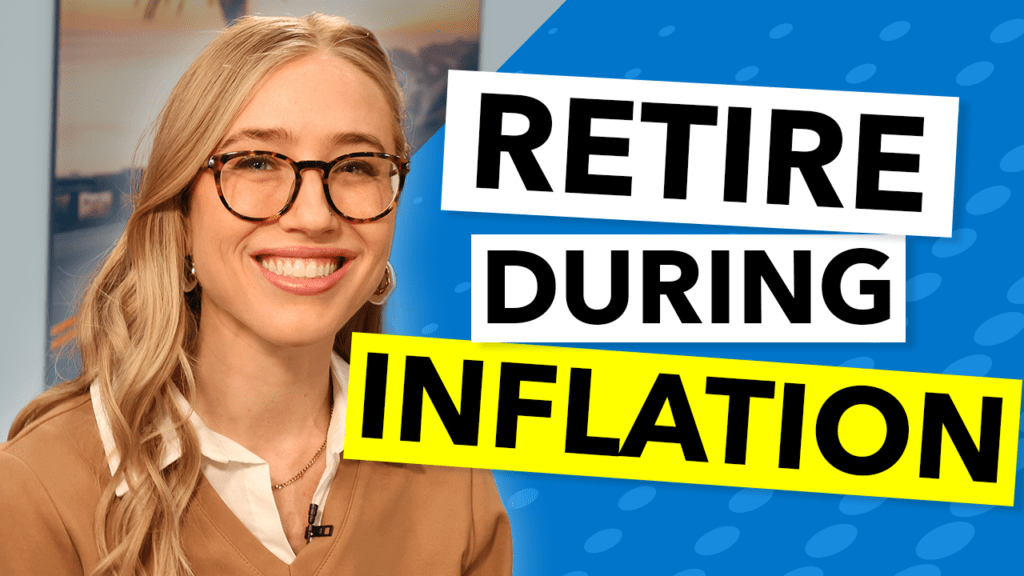Don’t leave retirement money on the table due to taxes! We’re diving deep into strategic planning to save you potentially thousands in tax dollars.
– Learn about the whopping $650 billion in tax savings retirees could utilize each year with proper planning.
– Discover why traditional savings accounts, like IRAs and 401(k)s, could be a tax time bomb for retirees.
– Understand the significance of a comprehensive retirement plan that includes investment, tax, and income strategies.
– Explore a real-life example of how a couple can save $140,000 in taxes through efficient retirement planning.
– Gain insight into the six pillars of a well-rounded retirement plan and the importance of starting your planning today.
–––––––––––––––––––––––––––––––––––––––––––––––––––––––––––––––––––––––––––––––––––––––––––––
TRANSCRIPT
Molly Nelson [00:00:02]:
No one wants to leave money on the table when it comes to retirement. We talk about how to avoid missed opportunities right now on Retiring Today. Welcome to Retiring Today. I am here with Clint Huntrods and Loren Merkle. Clint has his PhD and Loren is a CERTIFIED FINANCIAL PLANNER™, a Certified Financial Fiduciary®, and a Retirement Income Certified Professional®. Okay, guys, buckle up. I’ve got an interesting stat, or at least I think it’s interesting. A recent analysis found that there are $650 billion in tax savings that could be realized by retirees each year with the right planning.
Clint Huntrods [00:00:56]:
Billions each year.
Loren Merkle [00:00:58]:
Each year, billion. And that sounds like a ton of money. But if we look at the underlying stats that play into that, it does make a lot of sense. There are 12,000 people retiring every day that has been taking place for the last five years will continue for the next seven to eight years. 12,000 people retiring every single day. And the vast majority of their money is in accounts that have never been taxed before. And when they retire, they need to live on this money, which creates tax consequences. And they’re in a time in their life they have never been before, meaning that there’s strategies that they could need to be implementing to save potentially hundreds of thousands of dollars per individual, or at least tens of thousands of dollars, depending upon their situation every single year or over the course of their retirement.
So, there’s a lot on the table which adds up to billions of dollars that could be lost to taxes.
Molly Nelson [00:01:52]:
And the point today is, we don’t want you to leave money on the table. We want to help you figure out how does this happens and what action steps you can take. Because Clint, at the end of the day, people work hard. They save hard. They don’t want to leave even a penny on the table in retirement.
Clint Huntrods [00:02:07]:
Yes. The goal is to maximize everything that you’ve worked so hard to save for and make sure you can be as efficient as possible as you head into those retirement years. And that is just something that we do not always see. As Loren mentioned, a lot of people have saved pretax, and they’re really not prepared for that ticking tax time bomb that’s awaiting them if they don’t implement a tax plan in their early retirement years.
Molly Nelson [00:02:29]:
Yeah. So broad strokes, Loren, because Clint’s going to really get down to the nitty gritty us. A good example, but kind of in broad strokes, how does this happen? How does $650 billion get left on the table?
Loren Merkle [00:02:39]:
You retire the W2 income goes away. You need to live on something. You take Social Security, potentially, or at some point in retirement, you have Social Security that for most retirees is going to be subject to tax, but it doesn’t have to be. If you implement tax saving strategies, and then you couple that with the income that you’re taking from investments that has never been taxed before, that creates a tax bill on top of the Social Security tax bill that you have to pay every single month you receive the income that is income that’s subject to tax. People are not aware of the strategies that can be implemented to help save taxes. This is a phase of their life they’ve never had to go through before.
Molly Nelson [00:03:18]:
And, Clint, you’ve got a great example of one of those strategies, something you’re helping a family do right now.
Clint Huntrods [00:03:22]:
Yes, absolutely. This is an example of a family that we recently started working with, and we’ll just call them Mike and Pam for the example that we’re looking at. And with Mike and Pam, they are 62. Both are retired. And right now, just kind of like, as Loren mentioned, they have Mike’s pension turned on, and they have Pam’s Social Security turned on. This combined gives them a total taxable income of somewhere around $50,000 each year, which puts them in the marginal 12% tax bracket. And this is something that we often see, you know, people are excited about. They’ve retired.
They’ve been able to lower their tax rate. I mean, for this particular couple, they haven’t seen a 12% tax bracket for several decades. And you’re tempted in some ways to just say, hey, let’s keep our tax rate low. Let’s keep our taxable income low. But what they don’t realize is that if you continue down this path without a proactive tax plan, when this couple turns age 75, they now face required minimum distributions. Required minimum distributions are anything that’s saved pre-tax. You think about a. Or a pre-tax IRA, if you haven’t implemented a tax strategy between when they retire, and then they find themselves with $110,000 of required minimum distributions, forced out that they have to pay the tax bill on.
Clint Huntrods [00:04:45]:
And they, in this case, will stack that on top of their pension, Mike’s pension, and Pam’s Social Security. Later in the sixties, Mike turned on his Social Security, and now they’re stacking those RMD’s on top of that, which gives them a total taxable income of somewhere around $210,000 and an awful lot more money that’s being forced out and taxed than this couple really needs, which is going to push them into the tax bracket of 25% between now and then, it likely could be a higher bracket than that projected starting in 2026 to be 28%. Could be even higher. So, through implementing a tax plan for this couple, we showed them that Roth conversions can be a great strategy, one of many to implement, to allow them to save on their overall tax bill in retirement. So, if they do a Roth conversion, they stack that on top of Mike’s pension and Pam Social Security, they are still able to stay in that 12% tax bracket and convert dollars from pre-tax to Roth. And they’re able to convert $44,000 in this particular year. If they continue to do that over time. Once they reach RMD age, they have a very different picture.
Loren Merkle [00:05:59]:
Now.
Clint Huntrods [00:05:59]:
Instead of $110,000 and being forced into the 25% tax bracket, their RMD’s are much more reasonable. 35,000, which puts their total taxable income around 106,000, puts them in the marginal 22% tax bracket. So, this can be a lot more efficient way for this particular couple to move over the next 1213 years. And in doing so, this gives them a total retirement tax savings of $140,000. That’s 140,000 more dollars that they can keep, spend, or pass on to their next generation.
Molly Nelson [00:06:33]:
And I think the most fascinating part of this, Clint, is that you’re working with this couple right now, and they’re 62, but you’re showing them the next 13 years of retirement. And I’m guessing for a lot of people watching, this is new. This is new to see these kinds of projections and these kinds of numbers. Is it common for people not to have seen this before?
Loren Merkle [00:06:52]:
It’s very common because this is a phase that they’ve never been in before. And there’s a lot of people that are tempted, just like you mentioned, Clint, to say, I’m in a 12% tax bracket. That’s the lowest tax bracket I’ve been in for the last 15 to 20 years. I’m going to take advantage of it instead of deciding to intentionally. And that’s the strategy you were talking about with that Roth conversion. When you do a Roth conversion, you are intentionally deciding to pay taxes on money that you can continue to defer if you want to. There are a lot of CPAs out there, a lot of advisors, a lot of people that are tempted to say, let’s not pay taxes on money now. When we can pay taxes on money later.
Loren Merkle [00:07:29]:
But your example was prime in identifying to find the benefits of choosing to pay taxes at a lower rate now, to allow that money to grow tax free underneath the Roth indefinitely, and then not only does it potentially save tens of thousands to hundreds of thousands of dollars over your retirement tax bill, but it gives you more control over your money, too, because the required minimum distribution. In the first example, they were mandated to take out $110,000 from their IRAs whether they wanted to or not. In the second example, they were only mandated 35,000. That does not mean they couldn’t take out more if they wanted to, but they were mandated to take out significantly less.
Molly Nelson [00:08:10]:
Yeah. It’s worth noting that this is at current tax brackets and current tax rates. We know that in 2026, the tax brackets, if lawmakers do nothing, are set to go up. So even more of that money could be subject to tax.
Clint Huntrods [00:08:22]:
And it just goes to show the importance of having a proactive tax plan now, today, even if you haven’t retired yet, there are opportunities that you can likely be paying attention to, to implement, to get ahead of this. The last thing that you want to do is to find yourself at age 73 or 74 and say, oh, wow, I didn’t realize RMD’s were going to be that much. I didn’t realize it was going to push me up a couple different tax brackets. So, acting today, implementing that proactive tax planning strategy is really important for every family who has saved, especially if they’ve saved a lot pre-tax over the working years.
Loren Merkle [00:08:55]:
One of the most common pieces of feedback that we get is a, hey, I really like what you are talking about from your tax planning standpoint. When should we get started thinking about that kind of stuff? Today. Today is the best time. We say every single December 31 that goes by, and you do not have an intentional tax plan developed for you to demonstrate which strategies you should be implementing. That is a potentially wasted opportunity because the most effective tax planning strategies must be done in the calendar year. You can’t wait until spring of next year to implement these types of strategies. Like you can maybe a contribution to an IRA or a Roth IRA.
Molly Nelson [00:09:35]:
You heard Loren say it today. Today is the day to get started. Here’s a great opportunity to get started on your journey to retirement. It’s our online Journey to Retirement workshop. There’s tax planning in there, but there’s a whole lot of other stuff that’ll help you get ready for retirement. Go to RetireWithMerkle.com. You can sign up for a time and a date that works for you, but don’t go anywhere, we’ll continue talking about this concept of money left on the table. Try to help you avoid it, and we’re going to answer some of your questions from that online Journey to Retirement workshop next.
Molly Nelson [00:11:56]:
Welcome back. I’m Molly Nelson, here with Loren Merkle and Clint Huntrods. Now it’s time for Your Journey Your Questions, when we answer questions from you, we received during our online Journey to Retirement Workshop. Here is a question we got recently. I have an old annuity. What should I do?
Loren Merkle [00:12:14]:
This is one of the most common questions we’re receiving, probably within the last twelve to 18 months. Because there’s so many people who are looking at an annuity, first thing we need to do is determine what type of annuity do you have? Because there’s all kinds of types of annuities. There are income annuities, accumulation annuities, fixed annuities. What type of annuity do you have? And then evaluate some of the features of that annuity, such as what are the fees associated with the annuity? Some annuities out there cost nothing to very little, some of those annuities out there cost a lot of money. You want to know what your fees are for this annuity. You also want to determine what the return potential of the annuity is. Is there an opportunity cost associated with the type of annuity that you do have? If so, how much? And that will encourage or influence you to decide to change that annuity or keep it based on the outcome of that result. The other thing is, and probably the most important, is how does that annuity fit into your entire plan? Do you plan to take income from this annuity? If so, how much will it deliver? At what point down the road is it going to deliver that income? Is it a growth annuity? What’s the purpose of this annuity? How’s it going to benefit you over the course of your retirement? That all needs to go into what type of annuity do you have and should you keep it or do something different with it?
Clint Huntrods [00:13:36]:
And, Loren, not everybody is thinking about all these things as they’re investigating or evaluating an annuity. Just recently, my parents actually had someone show up to their front door, and they were pitching an annuity product to them. They didn’t know what their plan was. They didn’t know all the specific situations that they’re in, but they believed that this was going to be a good fit for them. And if you find yourself in that situation, don’t be afraid to reach out to other professionals. I mean, that’s always something that we can help you evaluate, and it can kind of be a challenging situation where someone’s really pressing you maybe to go with this particular route. You maybe don’t understand how it all works. And you certainly want to be hospitable.
Clint Huntrods [00:14:13]:
I mean, I’m sure my mom brought this individual in, gave them fresh baked cookies, of course, gave them coffee. But at the end of the day, don’t be afraid to push pause and better understand how this fits in your overall plan and talk to other professionals. And that’s something that you can always reach out to us, and we can help you evaluate.
Molly Nelson [00:14:29]:
And did you get the sense that the annuity that they were trying to pitch your parents was the same annuity they pitched the people next door and the person next door without knowing anything about their retirement vision.
Clint Huntrods [00:14:39]:
I would imagine they had a stack of those documents for that one particular annuity that they liked best, and they were able to explain to families, and they were going and sharing that with everybody.
Molly Nelson [00:14:51]:
The takeaway is, if they’re not asking you a lot of questions about your specific situation. They may have a cookie cutter approach to helping you with investments.
Loren Merkle [00:14:59]:
Yeah, it’s definitely a cookie cutter. A general rule that we want to go by is make sure that you have a plan before you engage in any type of product, before you invest in any type of product, whether it’s somebody showing up your doorstep or you’re going into an advisor’s office for the first time, and they’re already talking to you about a particular product that you should be investing in. Create that plan, because that plan is going to lead you to the type of product that you should be investing in. It is going to be intentional. There’s going to be a purpose behind the product, how it’s going to benefit you. And that’s why within our overall process, we’re not talking about product until that third visit, because that third visit, we have then created a plan. We know everything about what’s going to go into your retirement plan, and then we can pick the product that’s going to work best for you.
Loren Merkle [00:15:47]:
And everybody knows how that product is going to work, not only at the point of retirement, but also 5, 10, 15 years down the road.
Clint Huntrods [00:15:54]:
And we see a lot of families that come in and they have an old annuity or multiple annuities. And one thing that we’re finding right now is that given the interest rate environment that we’re currently in, compared to when maybe they started that annuity, now can be a really good time to evaluate alternatives and see if there isn’t something better that’s out there. And as interest rates start to come down, as we believe that they’re likely to, some of those opportunities may go by. So now is a great time to evaluate a current annuity that you have and see is there something better out there? And does it still fit in my overall plan?
Molly Nelson [00:16:26]:
And you guys said the word plan a couple of times. This concept of a plan is kind of new for people because a lot of times they’re relying on their investments. They’re thinking about the 401(k) as a retirement plan, but a plan is so much more. And the online Journey to Retirement Workshop goes through all of the pillars of a plan.
Loren Merkle [00:16:42]:
We go through all six pillars of the plan, through the hypothetical couple that we call John and Sue. They have some very specific retirement goals. And we’ll talk about their investment structure, how they create a recession resistant portfolio so they can live the lifestyle that they want to, regardless of what happens with this crazy market. We talk about the tax savings right how they can save six figures. And in this journey, John and Sue do in fact over the projected their projected retirement save six figures off their retirement tax bill, plus much, much more within the journey.
Molly Nelson [00:17:14]:
You can sign up for the online Journey to Retirement workshop by going to RetireWithMerkle.com. There’s also a QR code on your screen. You sign up for a time and a date that works for you and then get comfortable because it’s 2 hours well spent and you’re on your way to your retirement journey. We’ll continue to talk about that tax-saving strategy and how you can avoid leaving money on the table.
Molly Nelson [00:19:24]:
Welcome back. I’m here with Loren Merkle and Clint Huntrods and we’re talking about a recent analysis from Think Advisor. Get this, $650 billion in tax savings each year that could be realized by retirees with the right tax planning. It’s a big number, guys, and we want to make sure that the people watching know that they don’t have to have this happen to them. They don’t have to leave money on the table when it comes to retirement, how does it happen? That’s one of the questions we want to answer right now. And it happens because a lot of times advisors get focused on investments.
Loren Merkle [00:19:53]:
There’s a lot of neglect on the income and the tax plan because there is so much focus from advisors on the investments. And there’s a lot of reasons for that. But you know this, if you’ve ever talked to an advisor for the first time, chances are in that first visit, maybe even the second visit, the focus of that conversation is on the investments. Even if you’ve been working with your advisor for a significant amount of time, when you go in for the reviews, that conversation always goes to the investments, which, by the way, is important. But when we’re talking about leaving $650 billion on the table, by the way, the IRS is extremely happy about that.
Molly Nelson [00:20:28]:
They have a lot of people to employ.
Loren Merkle [00:20:30]:
Yeah, but you should not be happy about that because that is your money and you need that money to help you live the lifestyle in retirement. So now it’s about how do we focus, how do we focus on the broad retirement picture in addition to the investment plan, to make sure that you get to keep as much of your money throughout retirement as you can.
Molly Nelson [00:20:48]:
And I love how your board example, when you walked over their Clint, you showed us in numbers, you showed us in numbers a future look at things and showed $140,000 in tax savings. That was a really impressive number. But I want to go back to another number which said something about, the couple was living off of $50,000 a year. Now, some people watching that were like, yep, that’s perfect. That’s exactly what I want to live off in retirement. But there might be some people saying, well, I think my lifestyle, I’d like to live off a little bit more. We’d like to do some traveling and some other things. So, tell me about how that income comes into play.
Clint Huntrods [00:21:18]:
Yeah, there’s two things that stand out to me. Back to that example. The first one is that not 100% of that Social Security is taxable. And so, the number we showed was taxable income, it doesn’t mean it’s all of that gross income that’s coming in. The other thing is for this particular couple, because they are 62, they are on the open market for health care. And so, we are making sure that our income plan and our tax plan and our investment plan all also fits with their health care plan. So, in this particular example, they actually have a lot of cash that’s in the bank. And in their interest rate environment we’ve been in, that has been a good place to get reasonable returns.
Clint Huntrods [00:21:52]:
So, they’re actually going to be using some of that money they’ve saved up at the bank. To supplement any of their income needs over the next couple of years, which is going to ultimately give them a better price on their health care plan. And that’s really the difference in having an investment advisor versus a comprehensive retirement planner. And we hear it a lot. Families come to us and they say, hey, you’re a one stop shop where I know that I can get my health care needs taken care of. We’ve got AnnaMarie Morrow, who’s our Director of Health Care and Medicare, and she’s a great resource for our families to help understand what their health care options are if they need gap health care coverage to get them to Medicare eligibility, and then once they’re at Medicare, making sure that you can navigate the web of challenges around how complicated that can be. And so, we’re working in direct conjunction with AnnaMarie as retirement planners to make sure everything that we’re doing is pointing in the right direction, to be as efficient as possible as we build out plans for the families that we work with.
Molly Nelson [00:22:44]:
Loren, is it unusual for someone to sit down with, a professional in the industry you’re in, and have them worry much about the bank and the cash? Because really, with what they’re doing, that’s not necessarily lucrative for them. Right. To worry about what you have in cash? I think that’s maybe a new concept.
Loren Merkle [00:22:59]:
Well, a lot of the conversations in traditional advisor client relationships is how much do you have in emergency funds?
Molly Nelson [00:23:04]:
Right.
Loren Merkle [00:23:05]:
Just to make sure you have the liquidity and just in case something happens. But this cash to income strategy is a strategy that is significantly overlooked but can be so powerful, especially with cash interest rates up where they’re at right now. You can put cash aside, and if you give yourself enough time prior to retirement, you can collect enough cash to supplement your retirement income or live on completely, save money on Social Security, tax, save money on health care costs, because the health care costs can be subject to income, not assets. So, there’s a whole lot of different savings that can come into play with just a simple cash to income type strategy.
Molly Nelson [00:23:43]:
And that’s a great strategy. Another strategy you want to make sure that people understand could be part of this is tax efficient investments?
Loren Merkle [00:23:49]:
Investments are often part of the strategy – when you’re 40 years old and you’re saving in a 401(k) plan, maybe in an individual account, the efficiencies aren’t all that important. But when you’re trying to maximize every dollar, you have to go to your lifestyle and balance today’s lifestyle versus not running out of money 20 years down the road, every penny counts. And the most traditional type of investment used are mutual funds, which isn’t as important from a tax efficient standpoint in an IRA and a 401(k). But if you have a brokerage account, individual account, now it becomes important, which is one of the reasons we choose not to use investments like mutual funds, because they can be so tax inefficient and expensive.
There’s other investments that can be used that can create little or significantly less tax consequences, which can add to your bottom line. There is a study out there that was conducted, it says it can add anywhere between one to one and a half percent annual to your return. That over a 20-to-25-year period adds up to a lot of money that you could have as opposed to going to the IRS.
Molly Nelson [00:25:00]:
Clint, you talked about making sure the investment plan and the tax plan and the income plan all work together. The online Journey to Retirement Workshop is a great way to see exactly what you mean when you say that.
Clint Huntrods [00:25:10]:
Yeah, you can watch this hypothetical couple as they go to and through retirement, and you can see some of the decisions that they made on all of these different areas. And most importantly, how the different components to your retirement plan should all fit together. As you think about during your working years, you maybe thought of your retirement plan as really your investments and your investment only. But as you start to think about retirement, you know there’s a lot more moving parts when it comes to how do we most efficiently elect Social Security? What do we do with a pension that we might have? What do we do from a tax saving standpoint, as we’ve been talking about today? And you can just see that there’s a lot more moving parts. You can walk through this hypothetical couple’s example and you can start to see how they do this, and you can take some examples of what they’ve done that may be really appropriate and fit for your particular situation.
Molly Nelson [00:25:54]:
Who should attend the online Journey to Retirement Workshop?
Loren Merkle [00:25:56]:
If you’re 55 years old or older and you’re within ten years of retiring, you want to retire. Get started today. One of the hardest parts about creating a retirement plan is how do you get started? Through the online Journey to Retirement workshop, not only can you take away strategies that you can implement almost immediately to help decrease your retirement tax bill, create a retirement income plan, and more, but it also gives you tools to get started building your retirement plan so you can retire with confidence.
Molly Nelson [00:26:27]:
And you always like to say, Loren, you can watch it from the comfort of your couch.
Loren Merkle [00:26:31]:
That’s one of my favorite parts. You can relax, view it how you want to view it in your own surroundings.
Molly Nelson [00:26:46]:
Okay, so you can get comfortable and sign up for the online Journey to Retirement workshop RetireWithMerkle.com this has been Retiring Today and we thank you for watching.
Voice Over [00:27:02]:
Do I have enough saved for retirement? When should I take Social Security? Which Medicare option is best? How do I plan for inflation? Sometimes the road to retirement starts with more questions than answers. We’re here to help. Join us for our upcoming Journey to Retirement workshop. Get answers and start your retirement journey with confidence. Our online workshop includes information on Secure Act 2.0 and changing retirement rules. Visit RetireWithMerkle.com to register for an upcoming workshop. Your retirement journey starts now.
Voice Over [00:27:33]:
You dream of a happy retirement, but there are some big questions to answer first. Do I have enough saved? When should I take Social Security? How will I pay for health care and keep up with inflation? Go to MerkleRetire.com to schedule a 15 Minute Retirement Check-Up Call to talk directly with a Retirement Planner and get answers to your important retirement questions. The first step to your retirement starts with a 15 Minute Retirement Check-Up Call.
–––
We are an independent financial services firm helping individuals create retirement strategies using a variety of investment and insurance products to custom suit their needs and objectives. The content and examples shared are for informational purposes only and should not be construed as investment advice or serve as the sole basis for making financial decisions. Individuals are encouraged to consult with a qualified professional before making any decisions about their personal financial situation. Our firm is not permitted to offer legal advice. Investment Advisory Services offered through Elite Retirement Planning, LLC. Insurance Services offered through MRP Insurance, LLC.
